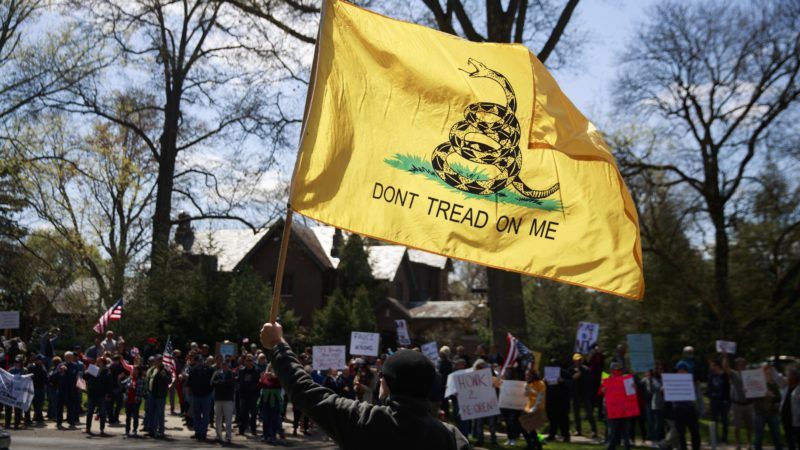The Reopen Debate Is a False Dichotomy
Staying inside forever and going back to normal today aren't the only choices.

Contrary to what you may have heard, Los Angeles County is not closing for another three months.
The original message from the county's public health director Barbara Ferrer—and from the media that covered it—caused an uproar. But the actual directive moves L.A. into stage two of its reopening plan, permitting residents to resume outdoor activities. Beaches are no longer off limits, nor are golf courses, tennis courts, or hiking trails. It allows all retail businesses except those in indoor malls to reopen for delivery or pickup. Manufacturing and logistics sector businesses deemed nonessential are permitted to restart, so long as social distancing guidelines are put in place. The county will continue to lift restrictions as they observe downward trends in the area's COVID-19 outbreak.
That's a start. But it still tells Angelanos not to resume socializing with anyone outside of their immediate household.
Meanwhile, D.C.'s shutdown remains as restrictive as ever, and it's currently scheduled to stay that way through June 8. The sole regard in which Mayor Muriel Bowser is loosening the rules is with a pilot program allowing select retail establishments to restart for curbside and front-door pickup.
Cases in D.C. have decreased 4 percent over the last 14 days, and the curve has plateaued. As of yesterday, 25 percent of ICU beds were empty and the hospital system has yet to experience a ruinous patient influx.
"While we are making significant progress based on the data and metrics that we are following closely, we are not ready to begin a phased reopening of the District," Bowser said at a Wednesday town hall. She did note that she can revise the order at any time, if the data start trending in the right direction.
After two months of some form of government-enforced isolation, when will leaders be ready? The chief purpose of the lockdown was to "flatten the curve"—that is, to squash the virus's projected spread from a mountainous upward trajectory into a more docile hill, saving hospitals from a cataclysmic onslaught of patients. Lost in the recent conversation is that, by and large, the U.S. has successfully flattened the curve.
Also lost in the discussion: A grand total of one state—the sparsely populated North Dakota—has sufficiently met the Trump administration's guidelines for beginning a phased reopening.
Indeed, 31 of the 32 states that have begun some sort of partial comeback are doing so against the federal guidelines, which came from a president eager to restart the economy. Even so, reopeners deemed high-risk like Florida and Georgia have yet to experience an uptick in cases, though many experts were sure they would. That casts the debate into an even more ambiguous light, as the two respective sides—economic vitality vs. public health—claim to have the higher ground.
But a middle ground is possible. We can tread lightly amid health uncertainties while trying to address the enormous economic and social toll of forbidding people from seeing anyone outside of their household for months on end.
"The full lockdown made sense weeks ago," wrote Marty Makary, a surgeon and a professor of health policy at the Johns Hopkins, in a New York Times op-ed this week. "But the situation is changing, and more data on the virus are now available to inform our next steps. The choice before us isn't to fully lock down or to totally reopen. Many argue as though those are the only options."
Indeed, failing to reckon with the public health reverberations of seemingly eternal lockdowns is its own form of imprudence. Much has been made about the obvious economic implications, which are devastating. Largely absent from the conversation are the equally obvious social costs. A poll from the Kaiser Family Foundation concluded that nearly half of American adults feel their mental health is suffering amid the pandemic and the associated isolation. Human beings have basic needs, and not everyone lives with a family or partner. Admonishments to just watch Netflix don't really cut it anymore.
A vaccine isn't expected until 2021 at the earliest. For many, the lockdowns are already coming to an end whether governments like it or not. Effective policy making will have to take that restlessness into account, along with all the trade-offs that are fueling it. An endless holding pattern is not an effective strategy.


Show Comments (109)